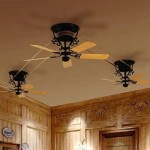Why Were Ceilings So High?
Historic buildings often boast impressively high ceilings, a feature that seems extravagant in modern construction. Understanding the reasons behind this architectural choice requires examining the historical context in which these buildings were erected. Several factors contributed to the prevalence of high ceilings, ranging from practical considerations of ventilation and temperature regulation to expressions of social status and architectural aesthetics.
Temperature Regulation
Before the advent of modern HVAC systems, regulating indoor temperature relied heavily on natural methods. High ceilings played a crucial role in this process. Heat rises, and a lofty ceiling allows hot air to accumulate away from the living space, keeping the lower portion of the room cooler. This was particularly beneficial in warmer climates.
Ventilation and Air Quality
High ceilings facilitated better air circulation. Large windows, often placed high on the walls, allowed for cross-ventilation, drawing fresh air in and expelling stale air. The increased volume of air also helped to dilute and dissipate odors and airborne contaminants, contributing to a healthier indoor environment, especially important in densely populated areas before modern sanitation practices.
Natural Light
Taller ceilings permitted larger windows, which maximized the amount of natural light entering a building. This was crucial before the widespread availability of artificial lighting. Larger windows provided more daylight hours, reducing the need for candles or lamps, which were expensive and presented fire hazards.
Accommodation of Large Furnishings and Gatherings
In grand residences and public buildings, high ceilings provided the necessary space to accommodate large furniture pieces, chandeliers, and decorative elements. These spacious interiors also facilitated large gatherings, balls, and social events, which were common in past eras.
Fire Safety
While seemingly counterintuitive, high ceilings could offer a degree of fire safety. By increasing the distance between the fire and combustible materials in the room, such as furniture and drapes, they provided more time for occupants to escape and for firefighters to extinguish the flames. The greater volume of air also diluted smoke concentration.
Demonstration of Wealth and Status
The construction of high ceilings required more materials and labor, making them more expensive. Therefore, they became a symbol of wealth and status. Grand homes and public buildings often featured soaring ceilings to impress visitors and project an image of power and prosperity. This architectural choice visually communicated the owner's or institution's affluence and importance.
Architectural Aesthetics and Proportion
High ceilings contribute significantly to a sense of grandeur and spaciousness. They can make a room feel more elegant and impressive. Architects often used high ceilings to create a sense of verticality and drama, emphasizing the proportions of a building and creating visually appealing spaces. This was particularly important in public buildings designed to inspire awe and respect.
Acoustic Advantages
Large rooms with high ceilings offer acoustic advantages. The increased volume allows sound waves to dissipate more effectively, reducing echoes and reverberations. This was particularly important in spaces designed for musical performances or public speaking, where clarity of sound was essential. The high ceilings also allowed for the installation of intricate plasterwork and other decorative features that could further enhance the acoustics of the room.
Adaptability to Changing Needs
High ceilings offered a degree of flexibility for future adaptations. As needs changed, upper levels or mezzanines could be added without compromising the functionality of the main space. This adaptability was particularly valuable in commercial buildings or workshops where changing technologies and workflows might require modifications to the building's interior.
Influence of Classical Architecture
The high ceilings prevalent in many historical buildings are often attributed to the enduring influence of classical architecture. Greek and Roman temples and public buildings featured soaring ceilings, which became associated with ideals of grandeur, permanence, and civic virtue. This classical heritage profoundly impacted architectural styles throughout history, contributing to the preference for high ceilings in a wide range of building types.
Technological Advancements and Changing Trends
As technology advanced, the need for high ceilings diminished. Improved heating and ventilation systems allowed for comfortable temperatures in rooms with lower ceilings. The development of electric lighting reduced the reliance on natural light. These advancements, combined with changing aesthetic preferences and economic considerations, led to a gradual decrease in ceiling heights in newer constructions. Modern building codes and energy efficiency standards also play a role in determining ceiling height, often favoring lower ceilings to minimize heating and cooling costs.

High Ceilings And How To Live With Them Bob Vila

High Ceilings And How To Live With Them Bob Vila

How To Decorate A Room With High Ceilings Designed

Classic Or Craze High Ceilings St Louis Homes Lifestyles

The Benefits Of High Ceilings In Your New Home Hallmark Homes

This Is Why High Ceilings Are So Popular In Southern Architecture Family Handyman

Staging Tip How To Take Advantage Of High Ceilings Luxury Home And Design San Diego Orange County

The Benefits Of High Ceilings In Your New Home Hallmark Homes

Staging Tip How To Take Advantage Of High Ceilings Luxury Home And Design San Diego Orange County

Why 10 Foot Ceiling Living Room The Right Choice Cozyhomez
Related Posts








